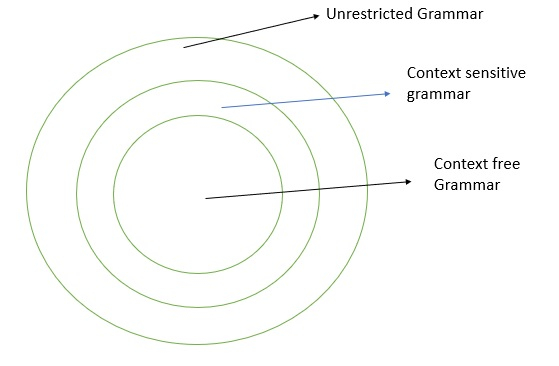
 Data Structure
Data Structure Networking
Networking RDBMS
RDBMS Operating System
Operating System Java
Java MS Excel
MS Excel iOS
iOS HTML
HTML CSS
CSS Android
Android Python
Python C Programming
C Programming C++
C++ C#
C# MongoDB
MongoDB MySQL
MySQL Javascript
Javascript PHP
PHP
- Selected Reading
- UPSC IAS Exams Notes
- Developer's Best Practices
- Questions and Answers
- Effective Resume Writing
- HR Interview Questions
- Computer Glossary
- Who is Who
What is Context-sensitive Grammar?
The Context sensitive grammar (CSG) is defined as G=(V,Σ,P,S)
Where,
- V: Non terminals or variables.
- Σ: Input symbols.
- P: Production rule.
- P:{αAβ → αγβ, A ? V,α ? (V∪Σ)*, β ? (V∪Σ)*
- S: Starting symbol.
Example
- aS→SAa|aA
- aA→abc
In context sensitive grammar, there is either left context or right context (αAβ i.e. α is left context and β is right) with variables.
But in context free grammar (CFG) there will be no context.
For example in production rule
S →0 B S 2 ,
B 0 → 0 B
We cannot replace B until we get B0.
Therefore, CSG is harder to understand than the CFG.
The CFG, CSG and the unrestricted grammar are depicted below −


Advertisements
